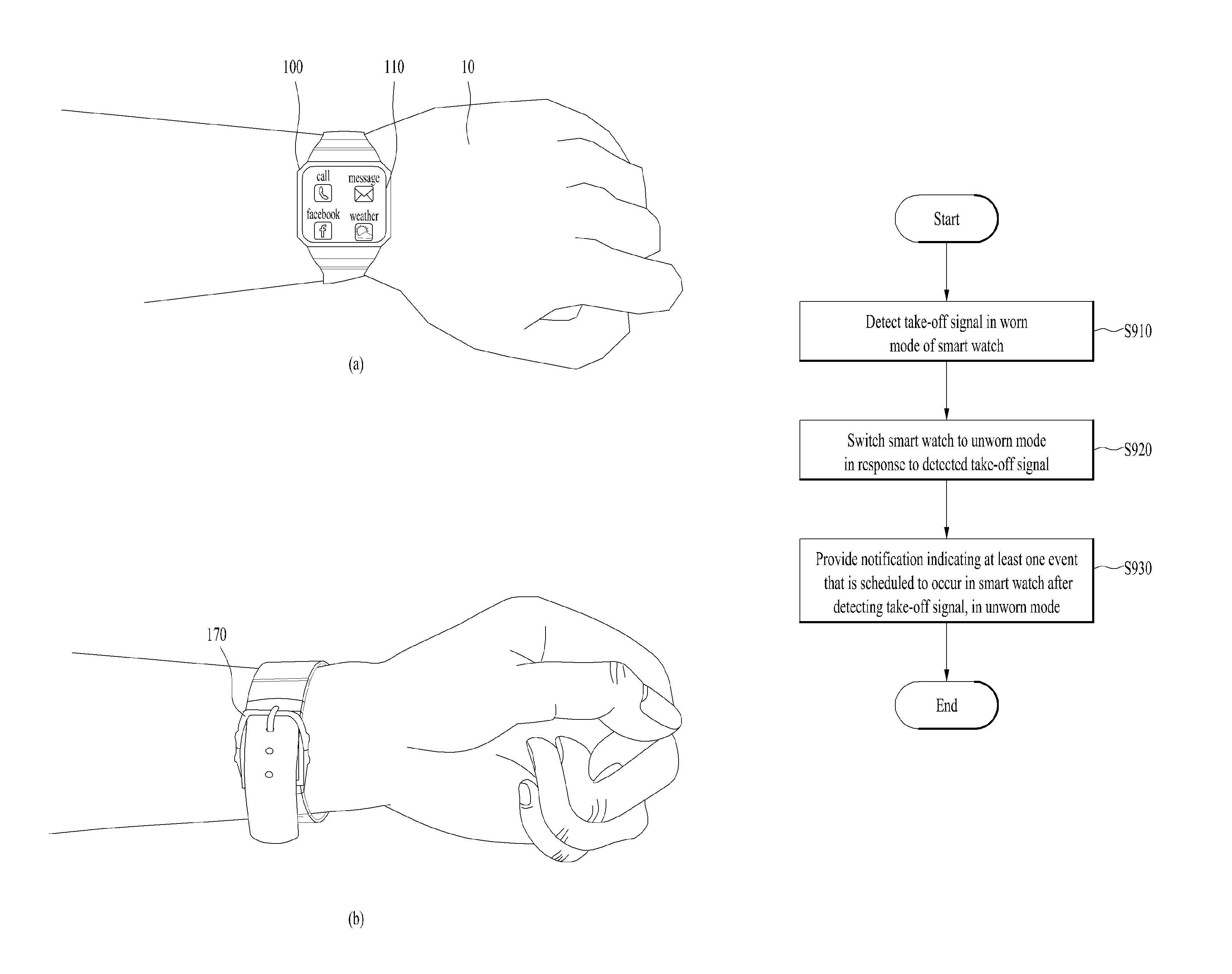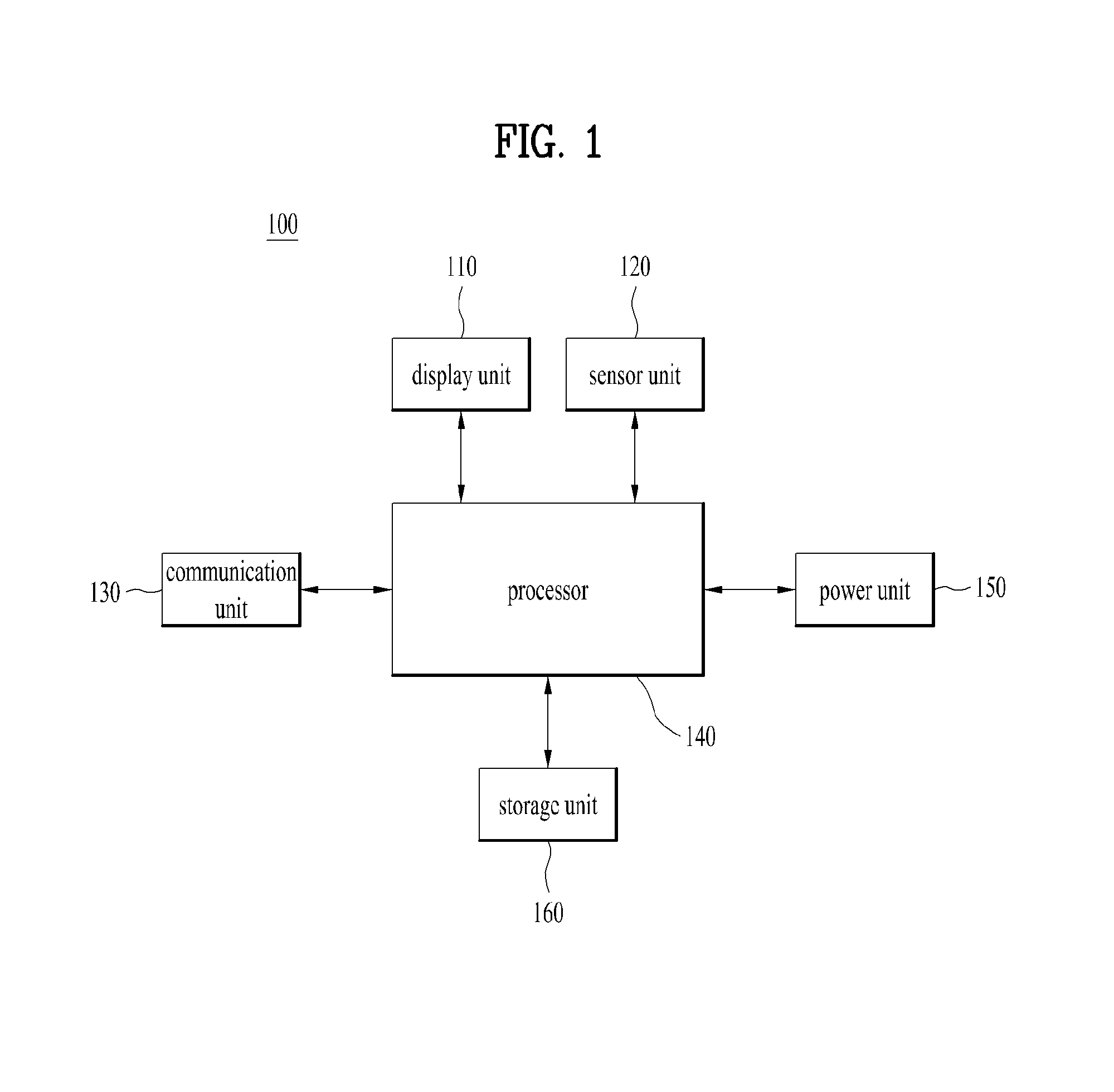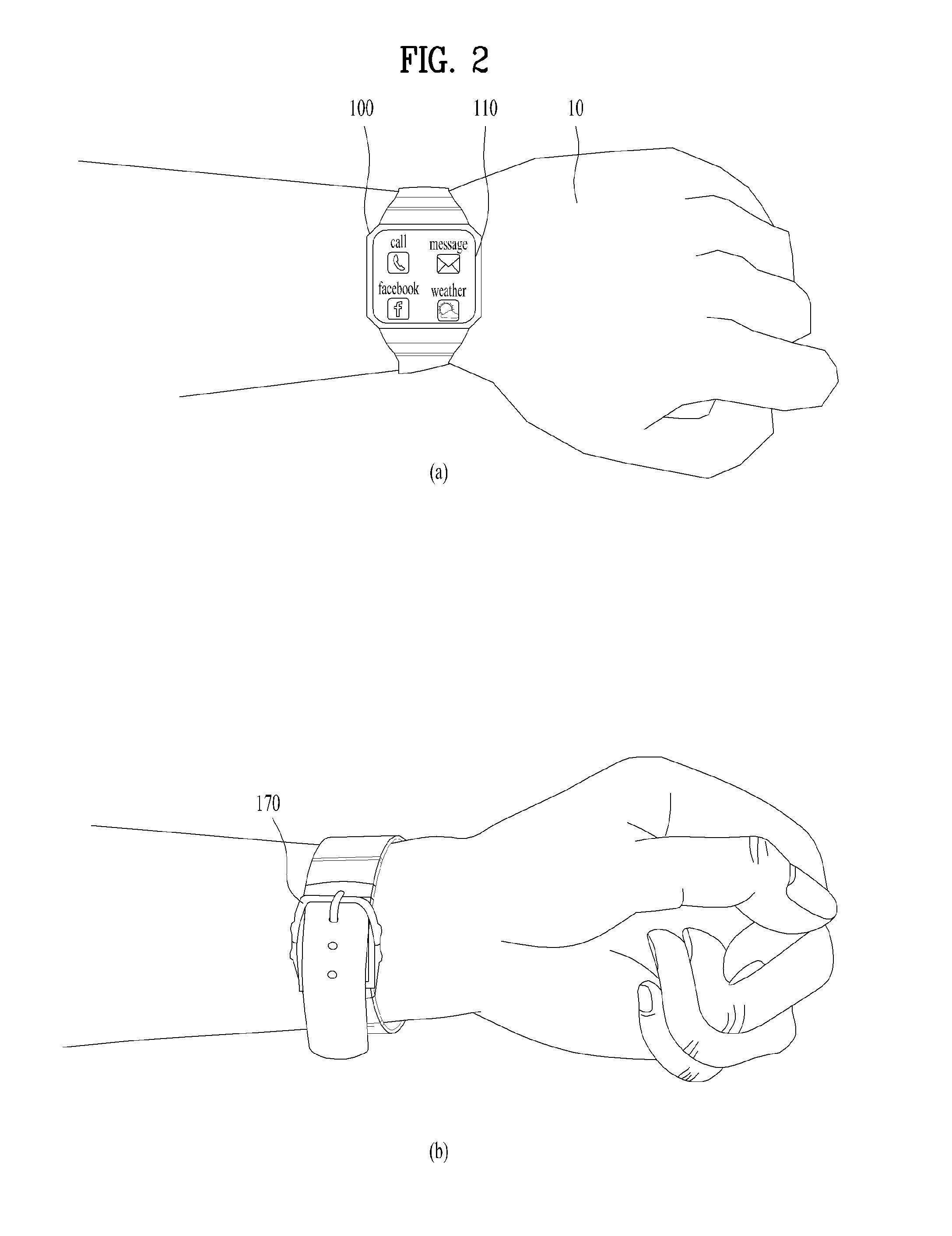Smart watch and control method for the same
- Summary
- Abstract
- Description
- Claims
- Application Information
AI Technical Summary
Benefits of technology
Problems solved by technology
Method used
Image
Examples
first embodiment
[0047]FIG. 4 is a view showing a control method for the smart watch according to the disclosure. More specifically, FIG. 4 shows provision of a notification in the case in which the smart watch 100 is switched from a worn mode (t0) to an unworn mode (t1).
[0048]First, a time t0 corresponds to a worn mode, i.e. a state in which the smart watch 100 is worn by the user 10. As described above with reference to FIG. 2, whether or not the smart watch 100 is worn may be determined based on the input signal with regard to at least one of the rear surface (not shown) of the smart watch 100 and the buckle (not shown) of the smart watch 100. In addition, at the time t0, the smart watch 100 may display a home screen or content that is in use from before. For example, as exemplarily shown in FIG. 4, at the time t0, the smart watch 100 displays a home screen, on which letters as well as icons, such as telephone symbols, etc., are displayed.
[0049]Next, at a time t1, the smart watch 100 may detect a...
second embodiment
[0055]FIG. 5 is a view showing a control method for the smart watch according to the disclosure. More specifically, FIG. 5 shows whether or not to unpair between the smart watch 100 and the external digital device 200 if the smart watch 100 is switched from a worn mode to an unworn mode.
[0056]First, in a worn mode of the smart watch 100, the smart watch 100 may perform pairing with the external digital device 200. As described above with reference to FIG. 3, once pairing is completed, the smart watch 100 may transmit or receive data via communication with the external digital device 200. Next, the smart watch 100 may detect a take-off signal. Next, the smart watch 100 may be switched to an unworn mode in response to the detected take-off signal.
[0057]In this case, the smart watch 100 may display a pairing interface 20 on the display unit. The pairing interface 20 is used to set whether or not to unpair between the smart watch 100 and the external digital device 200. In one embodimen...
third embodiment
[0059]FIG. 6 is a view showing a control method for the smart watch according to the disclosure. More specifically, FIG. 6 shows power on / off of the smart watch 100 when the smart watch 100 is switched from a worn mode to an unworn mode.
[0060]First, as described above with reference to FIGS. 4 and 5, the smart watch 100 may detect a take-off signal in a worn mode thereof. Next, the smart watch 100 may be switched to an unworn mode in response to the detected take-off signal. In this case, the smart watch 100 may display a power on / off interface 40 on the display unit 110. The power on / off interface 40 is used to set whether or not to turn on or off the smart watch 100. In one embodiment, the smart watch 100 may be turned off upon detecting a power-off input signal with regard to the smart watch 100. In this case, the display unit 110 of the smart watch 100 may be deactivated. That is, no content may be displayed on the display unit 110 of the smart watch 100. Additionally, in this c...
PUM
 Login to View More
Login to View More Abstract
Description
Claims
Application Information
 Login to View More
Login to View More - R&D
- Intellectual Property
- Life Sciences
- Materials
- Tech Scout
- Unparalleled Data Quality
- Higher Quality Content
- 60% Fewer Hallucinations
Browse by: Latest US Patents, China's latest patents, Technical Efficacy Thesaurus, Application Domain, Technology Topic, Popular Technical Reports.
© 2025 PatSnap. All rights reserved.Legal|Privacy policy|Modern Slavery Act Transparency Statement|Sitemap|About US| Contact US: help@patsnap.com



